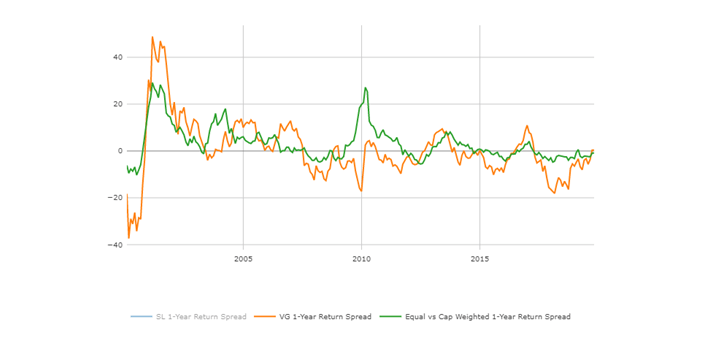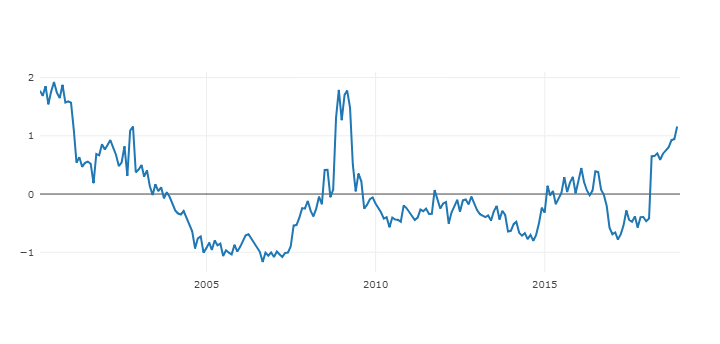Market Overview
We believe economic and earnings growth should remain solid well into 2019, which should provide support for investors. Corporate earnings results are at their best levels in years, but stock prices have struggled to move higher. Recent market volatility reflects investor concerns over inflation, politics, rising interest rates, trade wars, and earnings forecasts. The macro environment looks good for stocks over the long-term, but we won’t be surprised if investors remain cautious and continue to focus on downside risk over the short-term.
US Economics
The economy looks healthy, but investors appear to be indifferent. Data showing a rebound in retail sales, surprisingly strong figures for housing starts and building permits, and increases in industrial production, albeit reassuring, are having little impact on markets. We expect the Fed to continue an aggressive path of rate hikes. FOMC members noted resurfaced risks of inflation in their recent comments. This is confirmed by oil and gasoline breaking to new highs, as well as a surging CRB broad commodity index. The 10-year U.S. Treasury yield briefly topped 3% in April, because market participants expect stronger growth and inflation. Such economic growth could benefit investors and help support healthy corporate earnings.
Global Economy
The global economy is soft, but we expect a rebound. While recognizing sentiment risks, JP Morgan remains comfortable with their outlook for sustained, synchronized global growth. After surging 8.3% annualized in the three months through November, global retail sales volumes contracted 1.8% annualized in the following three months. Some of this is explained by a temporary drag related to a year-end rise in inflation and harsh winter weather. March data looks more positive. Global auto sales strongly rose for the first time in six months while both the U.S. and China reported retail sales gains. Moreover, global headline CPI inflation is moderating and strong underlying fundamentals have remained in place. Global unemployment rates fell again last quarter as employment gains held close to a remarkable two-decade high. At the same time, wage inflation gradually edged higher. Most importantly consumer confidence remains at a level above the peak of the last expansion.
Full Employment
Labor costs are very important for corporate earnings and profit margins. If the economy overheats and wages are too high, it is economically prohibitive for companies to expand their production due to shrinking incremental profit margins. With the current unemployment rate at 4.1%, why aren’t wages growing as fast as in previous expansions? First the cyclical participation gap has recovered slowly during this cycle. Meanwhile, the pace of job creation shows no sign of slowing. Goldman Sachs (GS) sees little evidence that supply constraints will impose a forceful natural deceleration any time soon, and instead expects robust labor demand to drive the unemployment rate to 3.6% in 2018 and 3.3% by the end of 2019. Should we expect robust wage inflation? If wage growth is to reflect productivity growth seen this cycle, that would imply full employment rate of wage growth around 3%. Signs of acceleration are emerging, notably in GS wage survey leading indicator, now running at 3.2%, and at the low end of the wage scale, where both the tighter labor market and minimum wage hikes have likely provided a boost. At its March meeting, the FOMC took a major step toward acknowledging that a substantial overshoot of its labor market target now appears likely. Considering the Committee’s long-standing concern about economic overheating, this acknowledgement seems to indicate the Fed will deliver gradual, quarterly hikes until job growth has slowed convincingly.
So, what one can do about rising wages? One can invest in industries which are less susceptible to growing wages: industries containing more intellectual property and scalability vs. those relying on lots of manual labor. In that light technology, biotech, and industrials seem more favorable, while restaurants, hotels and retail seems more vulnerable.
Earnings Season Full Swing and Rotation of Sentiment
First quarter earnings results have been impressive so far, but stock prices have struggled to move higher. Consensus projections are for 15% annual earnings per share (EPS) growth in the U.S. It is notable that revenue growth is very healthy, and near the highest in years in both the U.S. and Europe. This alleviates the pressure on margins to do the heavy lifting, and suggests earnings growth is becoming more sustainable. While wage inflation is approaching 3% growth, it is not yet weighing down aggregate earnings. In addition, earnings remain positively correlated to oil prices.
Long-term investing vs. short-term speculations
Over the last two months the speculation over a possible trade war between US and China dealt a huge blow to the technology sector and other global companies. Many multinationals corporations were penalized by the market. Their economics have been threatened by a possibility of retaliation from China and escalating tariffs between the major global economies. We are still hopeful the two economic giants can reach an agreement they can live with and that will alleviate the pressure on technology and other global sectors.
Our stock investment approach is built on investing in companies with the right combination of factors at a reasonable price. We are comfortable with our current portfolios. We believe in the long run, valuations, free cash flows, profit margins, expanding sales and quality of management drive returns. The historical evidence suggest that we are better served sticking to our guns and not falling for short-term fads or chasing yesterday’s winners at overvalued prices. We will continue to focus on generating long-term returns for our clients. We appreciate your continued confidence and will always work hard for you amidst this every changing environment.
The information and opinions included in this document are for background purposes only, are not intended to be full or complete, and should not be viewed as an indication of future results. The information sources used in this letter are: Jeremy Siegel, PhD (Jeremysiegel.com), Goldman Sachs, JP Morgan, Empirical Research Partners, Value Line, Ned Davis Research, Citi research and Nuveen.



























































































